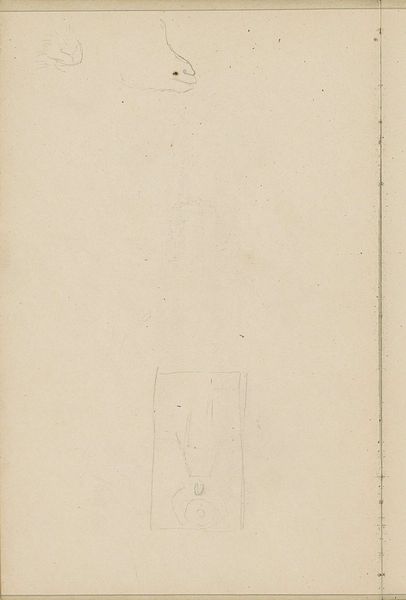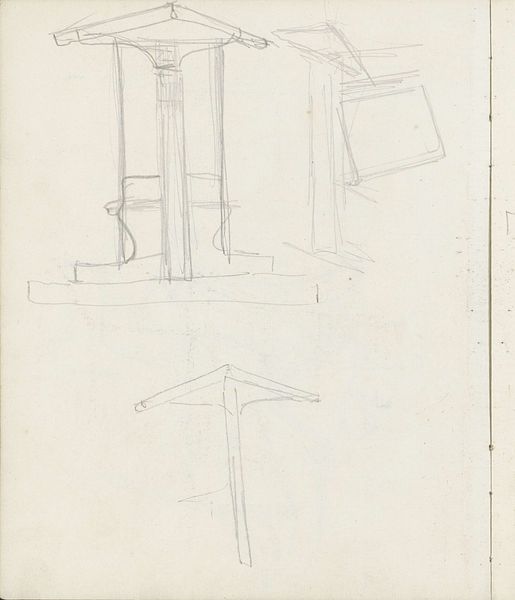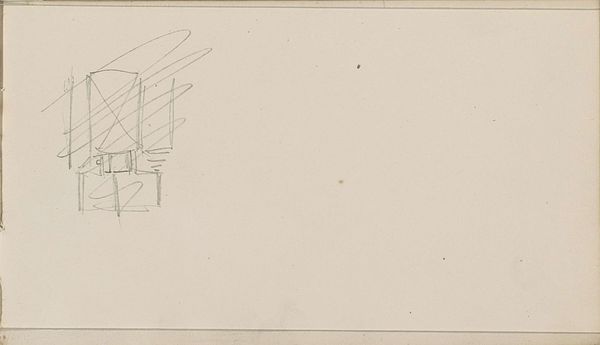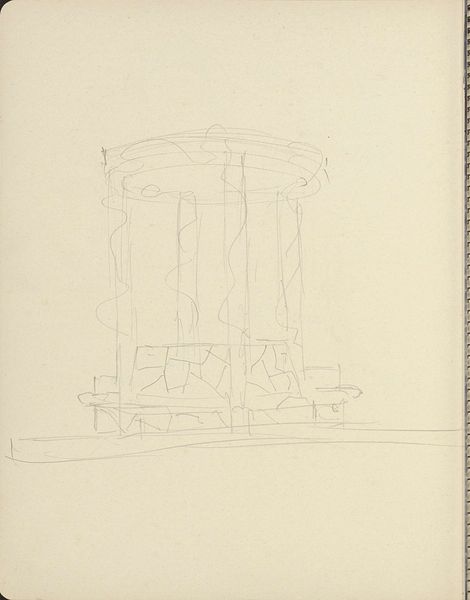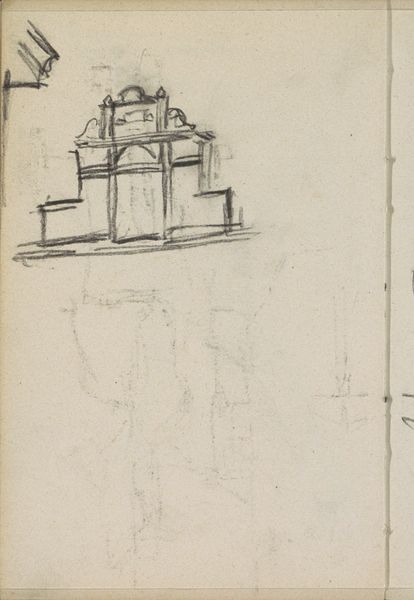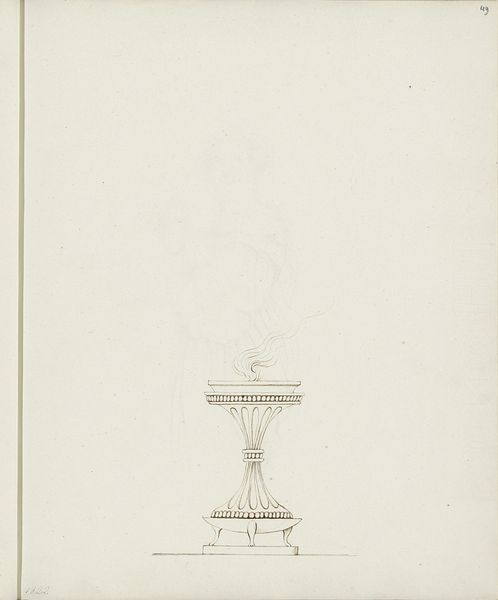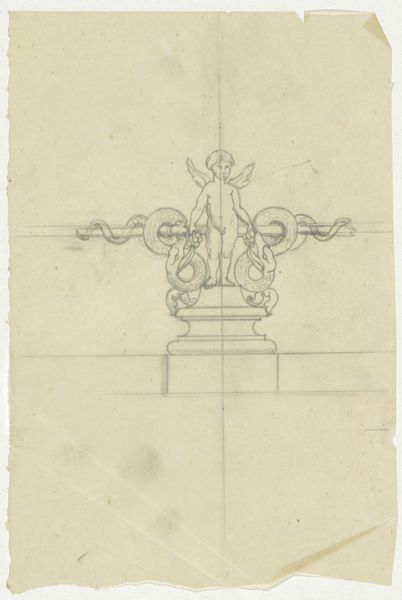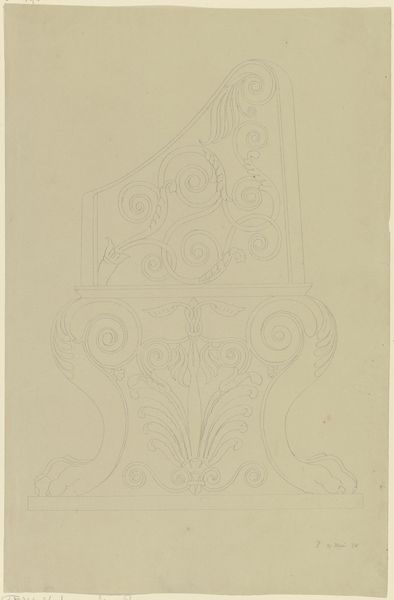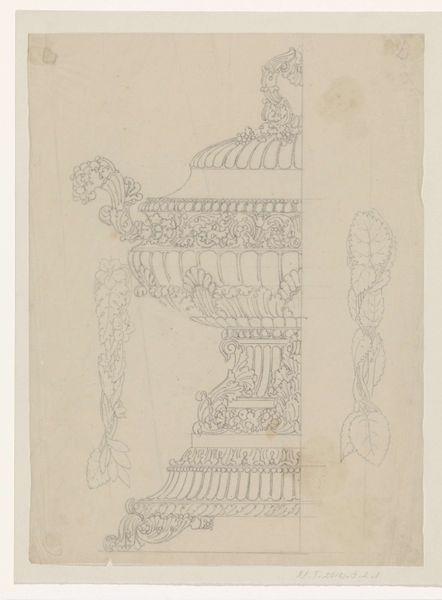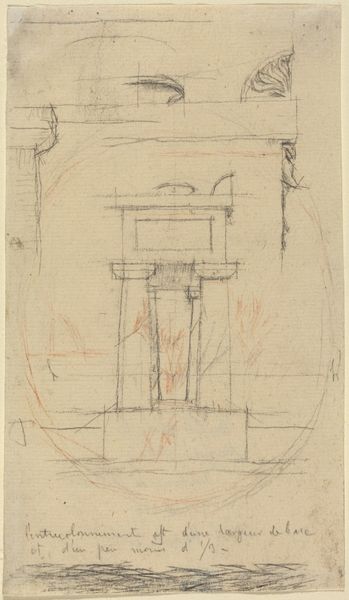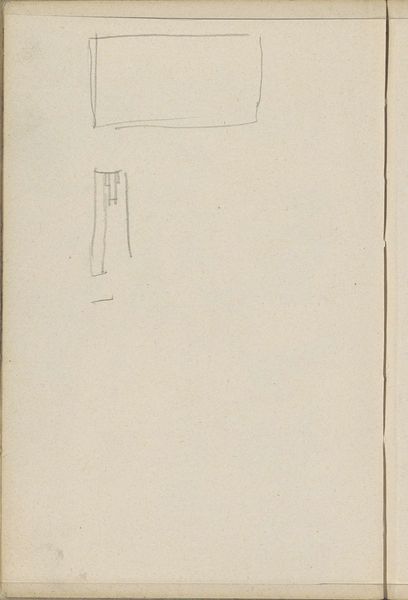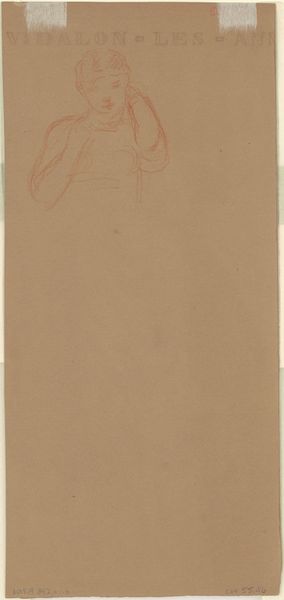
Copyright: Rijks Museum: Open Domain
Editor: So this drawing, "Ronde tafel met drie poten," from around 1925 by Carel Adolph Lion Cachet, is a pencil sketch on paper. It’s strikingly simple, almost skeletal, in its representation of the table. What’s interesting to me is how the support structure is highlighted. How do you interpret this work? Curator: I see this sketch not just as a design for a table, but as an artifact reflecting the artist’s process and the societal value placed on craft. Notice the materials: inexpensive paper and pencil. This suggests it's a preliminary sketch, perhaps for mass production. Was this design ever realized, made into a table? The means of its production would also have dictated its accessibility, both economic and social. Editor: That's a great point. I hadn’t considered the accessibility factor tied to its potential mass production. So, if the table were actually built, what material implications would it reveal? Curator: Precisely! Would the table be made of readily available, affordable wood, like pine, for a broader market, or a more luxurious material like mahogany, signifying a different class of consumer? We might also examine the labor involved. Was this intended as a handcrafted, unique piece, or as a design destined for factory replication? Editor: It’s amazing how a simple sketch can open up a discussion about the socioeconomic aspects of design and production! Curator: Exactly! By looking closely at the materiality and the implied production process, we can reveal the broader cultural and economic forces at play. We move past just seeing this as a design and explore how it fits into a larger material and economic system.
Comments
No comments
Be the first to comment and join the conversation on the ultimate creative platform.

